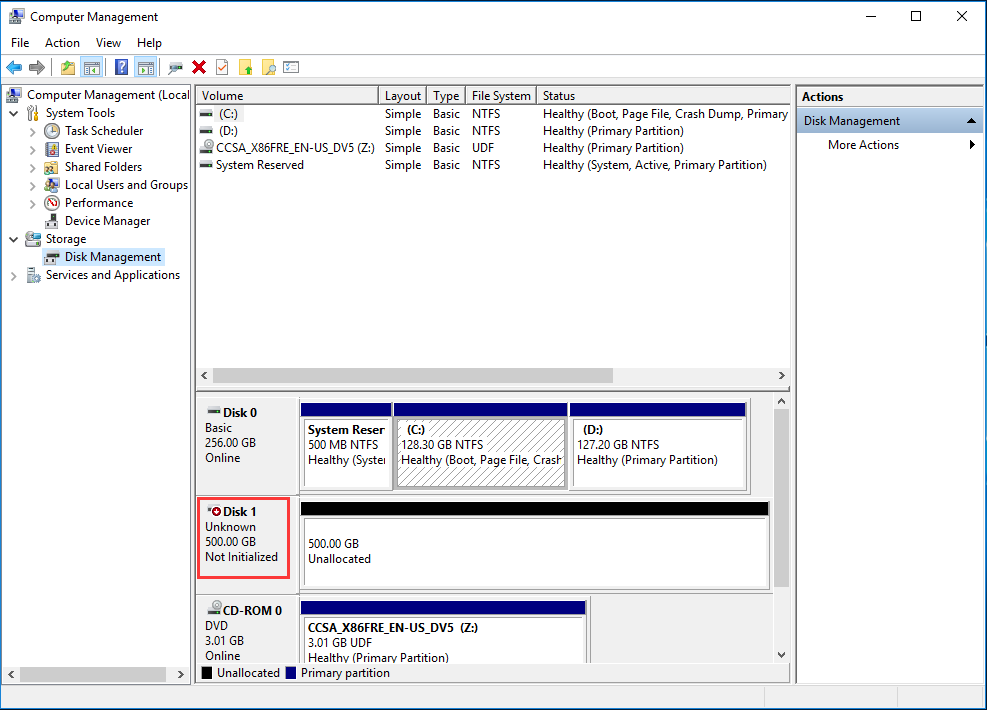Sometimes your SSD is properly connected to your PC, showing up in Device Manager, but not showing up in My Computer. In this case, perhaps the drive letter is missing on the SSD partition due to some reasons, so you can't access it in Windows Explorer. Solution: Assign a Drive Letter. The computer is a laptop, the original HD is inside the laptop and it is a 2.5', normal laptop SATA connector with an HDD. The new disk is an SSD disk by Kingson 240GB and in perfect working order and NEW. The New disk and interface cable (USB to SATA) is working as evidenced by working on an Xbox One (tested) Issue. Computer can not recognize the new purchased SSD which means this SSD is not showing in Computer or Disk manager. This could be caused by the lack of the related SSD driver in Windows. This often happens in Windows 7 and XP. SSD with SATA interface.
Computer Not Seeing New Ssd Drive


Troubleshooting for the following Drive conditions:
1. Drive is completely new
2. Drive worked for a while
3. Drive is secondary or just for storage
4. Drive is the system drive (bootable)
Drive is not detected flow chart:
SOLUTION A - Drive Used to work - Secondary or Storage
1. Check the drive letter and the partition
2. If it is possible, try to recover your data
3. If the drive is NOT detected by the operating system, verify that the drive is detected by the BIOS
4. If the drive is NOT detected by the BIOS verify that the power and data cables are properly connected
5. If the drive is still NOT detected, try to detect it in another computer (internal) or connect it in an external enclosure
6. Connect anotherdrive to the same port
7. Check the return policy and replace the drive
SOLUTION B - New Drive - Secondary or Storage
1. Connect the drive to the PC
2. Check the BIOS settings
3. If the drive is NOT detected by the BIOS verify that the power and data cables are properly connected
4. If the drive is still NOT detected, connect it to another computer (internally) or connect it in an external enclosure
5. Connect another drive to the same port
6. Check the return policy and replace the drive
SOLUTION C - Drive Used to Work - System Drive
1. Try to identify the problem (SMART, system error message…)
2. Check the BIOS settings
3. If the drive is NOT detected by the BIOS verify that the power and data cables are properly connected
4. If it is possible, try to recover data
5. If it is possible, run some diagnostic tools (such as SMART or Checkdisk)
6. Try to repair or restore the OS
7. If the drive is detected but OS CANNOT be repaired format and reinstall the OS
8. If you have found a consistent error check the return policy and replace the drive
SOLUTION D - Never used Drive - System Drive
1. Connect the drive to the PC
2. Check the BIOS settings
3. If the drive is not detected by the BIOS verify that the power and data cables are properly connected
4. If the drive is still NOT detected, connect it to another computer (internally) or connect it in an external enclosure
5. Connect another drive to the same port
6. Check the return policy and replace the drive
Computer Not Detecting Ssd Card
NOTE: If the above steps do NOT resolve the problem pleaserequest a replacement using our online web form.
